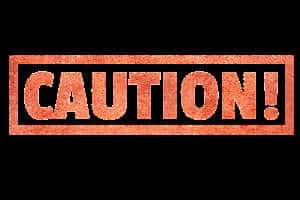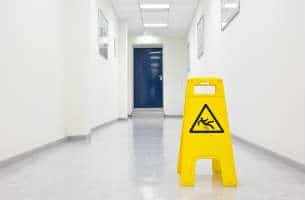Is Your Workplace Safeguarded From Preventable Fall Hazards?
Workplace safety should be something that’s strived for constantly. Part of being a responsible business owner is making sure that your employees and customers are always safe and that your business is free of preventable hazards which could lead to serious accidents and injuries. Even if your workplace already has a safety plan in place, it’s good to hold regular safety reviews and determine if there’s anything more you can do to keep your business safer.
June is National Safety Month, so we think this is the perfect time to review your workplace’s safety protocol. This week’s focus is on fall prevention, which should be taken seriously in all workplaces. Falls are some of the most common workplace accidents and can have some of the most serious consequences.
Common Workplace Fall Hazards
There are several common workplace hazards which frequently result in accidents and injuries. Being aware of and protecting against these hazards is key to making sure your workplace is safe.
Walking/Working Surface Hazards
Every business should be mindful of the safety of their floors and working surfaces. Slip and fall hazards, clutter and obstructions, and unstable surfaces all present dangers to both workers and customers.
Some good ways to make sure your walking and working surfaces are safe include:
- Make sure any wet or recently cleaned floors are clearly marked with wet floor signs.
- Keep walking paths and stairs free of clutter.
- When it snows, make sure to clear snow and ice from outside of your business in a timely manner.
- Make sure employees wear slip-resistant shoes in workplace environments that commonly have wet floors, such as kitchens.
Holes and Openings
In the construction industry, it’s common for laborers to work in close proximity to floor holes and wall openings. The Occupational Safety and Health Administration (OSHA) has several official safety guidelines which can help make sure construction workers are safe from falling through holes and openings:
- Every floor hole should be guarded with railings, toe-boards, or floor hole covers.
- Elevated open-side platforms, floors, and runways should be guarded with guardrails and toe-boards.
- Areas, where workers could fall into or onto dangerous equipment, must be guarded with guardrails and toe-boards.
- Workers should be provided with safety harnesses, nets, stair railings, and handrails.
How Common Are Workplace Falls?
Falls from heights and slips, trips, and falls are some of the most common workplace accidents. According to the Centers for Disease Control (CDC), in 2014 nearly 262,000 workers missed one or more days on the job because of fall injuries and 798 workers died in fall accidents.
Construction workers are at the highest risk of fatal falls, while healthcare and retail workers are at the highest risk of nonfatal fall injuries. Some of the highest-risk jobs for fall accidents include:
- Healthcare support
- Construction and extraction
- Building cleaners and maintenance workers
- Transportation and material moving
How Can Businesses Prevent Work-Related Falls?
Fall accidents don’t only hurt the employee who fell – they can also hurt businesses as a whole. The CDC estimates that the financial burden of fall incidents is roughly $70 billion per year in the United States. These costs are mostly made up of workers’ compensation and medical costs related to these accidents.
Businesses can protect their workers and their financial bottom line by doing all that they can to make sure their workplaces are free of preventable fall hazards. This includes being aware of OSHA guidelines for your particular industry and making sure that employees are properly trained in safety protocol. Employers should strive to create a workplace culture where safety is always emphasized.
Additionally, businesses should look into how modern technology can help make their workplaces safer, such as through the use of sensor technology which can help predict and prevent accidents before they happen.
